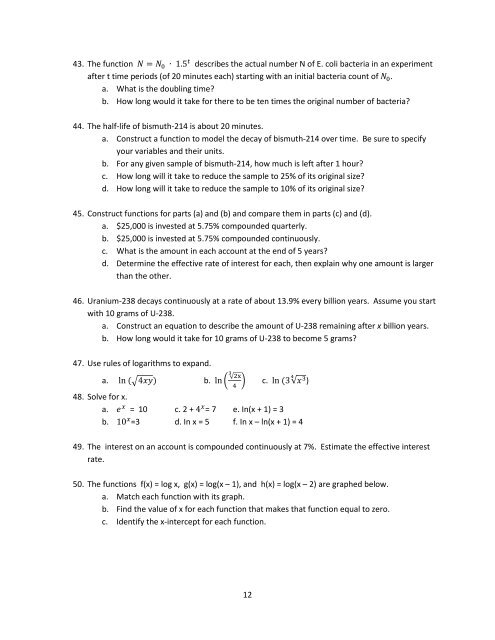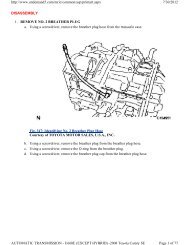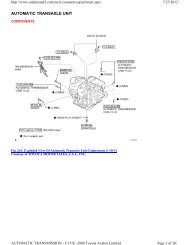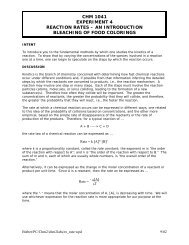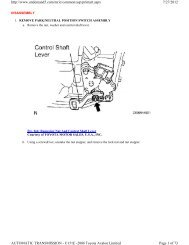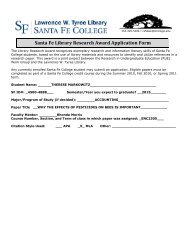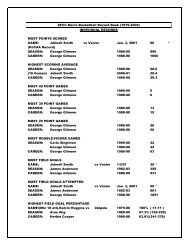1 MAC1105, College Algebra Study Questions for Common Final ...
1 MAC1105, College Algebra Study Questions for Common Final ...
1 MAC1105, College Algebra Study Questions for Common Final ...
You also want an ePaper? Increase the reach of your titles
YUMPU automatically turns print PDFs into web optimized ePapers that Google loves.
43. The function = ∙ 1.5 describes the actual number N of E. coli bacteria in an experiment<br />
after t time periods (of 20 minutes each) starting with an initial bacteria count of .<br />
a. What is the doubling time?<br />
b. How long would it take <strong>for</strong> there to be ten times the original number of bacteria?<br />
44. The half-life of bismuth-214 is about 20 minutes.<br />
a. Construct a function to model the decay of bismuth-214 over time. Be sure to specify<br />
your variables and their units.<br />
b. For any given sample of bismuth-214, how much is left after 1 hour?<br />
c. How long will it take to reduce the sample to 25% of its original size?<br />
d. How long will it take to reduce the sample to 10% of its original size?<br />
45. Construct functions <strong>for</strong> parts (a) and (b) and compare them in parts (c) and (d).<br />
a. $25,000 is invested at 5.75% compounded quarterly.<br />
b. $25,000 is invested at 5.75% compounded continuously.<br />
c. What is the amount in each account at the end of 5 years?<br />
d. Determine the effective rate of interest <strong>for</strong> each, then explain why one amount is larger<br />
than the other.<br />
46. Uranium-238 decays continuously at a rate of about 13.9% every billion years. Assume you start<br />
with 10 grams of U-238.<br />
a. Construct an equation to describe the amount of U-238 remaining after x billion years.<br />
b. How long would it take <strong>for</strong> 10 grams of U-238 to become 5 grams?<br />
47. Use rules of logarithms to expand.<br />
a. ln 4 b. ln √<br />
48. Solve <strong>for</strong> x.<br />
<br />
<br />
<br />
<br />
c. ln 3√)<br />
a. = 10 c. 2 + 4 = 7 e. In(x + 1) = 3<br />
b. 10 =3 d. In x = 5 f. In x – ln(x + 1) = 4<br />
49. The interest on an account is compounded continuously at 7%. Estimate the effective interest<br />
rate.<br />
50. The functions f(x) = log x, g(x) = log(x – 1), and h(x) = log(x – 2) are graphed below.<br />
a. Match each function with its graph.<br />
b. Find the value of x <strong>for</strong> each function that makes that function equal to zero.<br />
c. Identify the x-intercept <strong>for</strong> each function.<br />
12


